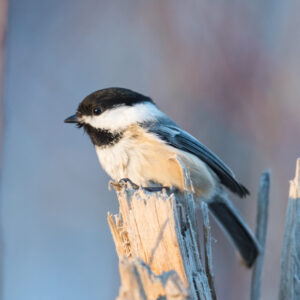Neonics: What these neurotoxins mean for you & Canada’s nature

Kim Willoughby
This blog post was written by Nature Canada guest blogger Kim Willoughby.
By now you’ve undoubtedly heard about the plight of bees and other pollinators worldwide. The prevalence of insecticides is killing them, threatening the food crops that rely on pollinators to produce some of the fruit and vegetables we eat. But that’s only a part of the story. These insecticides threaten all life in some way – including you and your family.
What neonics are
Introduced in the 1990s, neonicotinoid pesticides or “neonics” are the most widely used insecticides in the world to control pests such as aphids, stink bugs, and spider mites. Agricultural applications include foliar sprays as well as soil and seed treatments. The treated plants absorb the nicotine-based neurotoxins, appearing in their roots, stems, leaves, flowers, pollen as well as their nectar. The chemicals also end up in the soil and in waterways – whether or not the soil received direct treatment due to irrigation, rain and even wind.
Besides agricultural applications, neonics are also widely used in forestry, pet flea and tick treatments, domestic animal breeding, and in both commercial and residential lawn care products.

A Wild male Turkey, photo by Sandy Thompson.
Why there’s resistance to change
Modern life has come to rely heavily on neonics for many applications during the last three decades. While these pesticides are often convenient and economical tools, the dire consequences of their use are slowly coming into focus. In fact, many countries are beginning to understand that their continued use is costly to society on many levels.
In April the European Union voted for a total ban on neonics by the end of 2018 – the only exception being inside greenhouses. Health Canada’s Pest Regulatory Agency (PMRA) has proposed to phase out imidacloprid, one of the types of neonics commonly used, for agricultural and most other outdoor uses by 2021. In May hundreds of scientists, including several Canadian environmental groups, called on global policymakers to ban neonics by the end of the year.
How neonics affect Canada’s environment and wildlife
A growing body of global research indicates that these pesticides are accumulating in the environment and appearing in all forms of life. Soil, rivers, streams, ponds and lakes contain growing concentrations of neonics. The neurotoxins are also appearing in wildflowers, grass and other forms of native vegetation as well as earthworms, bees, butterflies, dragonflies, predatory beetles, frogs, freshwater fish, birds, and mammals.
How they may affect you and your family
- While research on human health is ongoing, findings to date indicate that exposure to neonics is harmful and even deadly in some cases, especially to children, pregnant women and seniors
- Long term or extensive exposure has been linked so far to memory loss, neurological disorders, anencephaly, heart defects and cardiac problems, attention deficit/hyperactivity disorders, and autism spectrum disorders
- Besides fruit and vegetables that have been directly treated with neonics, their residues have been found in milk, honey, tea, wheat, rice, pulses, and freshwater fish
- Studies show that dogs that have been exposed to lawns or public green spaces treated with pesticides have a 70 per cent risk of developing malignant lymphoma
- Other research has shown that pest repellent collars and sprays for dogs and cats are carcinogenic to both pets and people
What you can do to make a difference
- Vote with your wallet by buying fruit and vegetables that have been grown without conventional pesticides
- Get involved and help protect Canada’s nature
- Watch the Environmental Working Group’s (EWG) Shopper’s Guide to Pesticides in Produce
- Watch EWG’s Conventional vs Organic Pesticides
- Maintain your yard with proven green alternatives to harmful pesticides
- Use homeopathic treatments for your cats or dogs instead of toxic, on-spot flea and tick products

|
Want more nature news?Discover more about the nature you love. |



